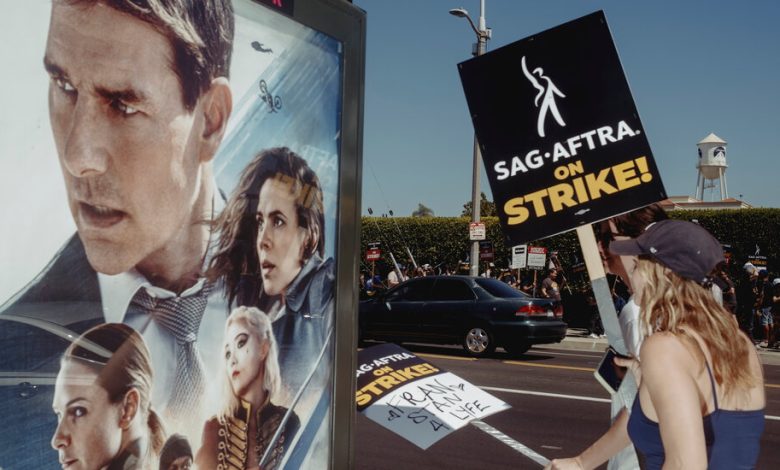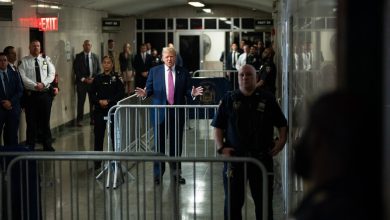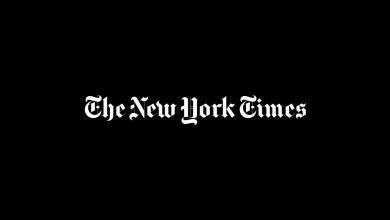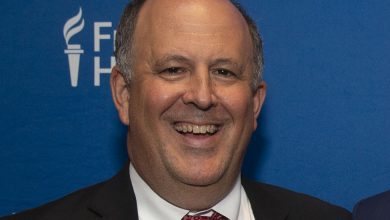‘Mission: Impossible’ for Tom Cruise: Meeting Hollywood Expectations

Tom Cruise’s seventh “Mission: Impossible” spectacle, which arrived in theaters on Wednesday and cost at least $400 million to make and market, was supposed to mark a turning point at the troubled summer box office. Death-defying stunts! A new love interest! That thrilling theme song!
Ticket sales were solid. But the spectacular (and perhaps unrealistic) result that Hollywood was expecting did not materialize, extending concern about the movie capital’s overreliance on aging franchises — and adding to studio dread about what kind of damage the actors’ strike might have on the rest of the high-stakes summer slate.
As an added vexation, a low-budget movie from outside the Hollywood system, “Sound of Freedom” (Angel Studios), which some critics have attacked as a recruiting tool for the far right, became a box office phenomenon.
“Mission: Impossible — Dead Reckoning Part One,” directed and co-written by Christopher McQuarrie, took in $56.2 million over the weekend in the United States and Canada, for a total of about $80 million since opening on Wednesday. Overseas, the two-hour-43-minute movie collected an additional $155 million, for a global total of about $235 million, according to Paramount Pictures.
Analysts that track moviegoer interest and use complex formulas to forecast ticket sales had predicted that “Dead Reckoning Part One” would generate about $250 million worldwide over its first five days, with the United States and Canada contributing at least $85 million. “The industry was looking for bigger here,” said David A. Gross, a film consultant who publishes a newsletter on box office numbers.
“This opening is roughly average for an action thriller at this point in its series,” Mr. Gross said about the ultraexpensive “Dead Reckoning Part One,” which received sensational reviews. “Of course, there’s nothing average about this film.”
Mr. Cruise, considered white hot as a box office draw following last year’s “Top Gun 2,” promoted “Dead Reckoning Part One” with his usual globe trotting, walking red carpets for premieres in Rome, London, Abu Dhabi, Seoul, Sydney and New York. Early last week, he made surprise appearances in movie theaters at preview screenings in cities like Toronto, Atlanta and Miami.
The blistering promotional campaign for “Dead Reckoning Part One” will be Hollywood’s last until a consortium of studios can come to terms with SAG-AFTRA, as the powerful actors’ union is known. On Friday, the union went on strike for the first time in 43 years, saying it was fed up with exorbitant pay for entertainment moguls and worried about not receiving a fair share of the spoils of a streaming-dominated future.
In the coming weeks, studios like Universal, Sony and Disney have movies set for release that will have to do without the promotional star power of people like Denzel Washington (“The Equalizer 3”), Owen Wilson and Tiffany Haddish (“Haunted Mansion”) and Will Ferrell and Jamie Foxx (“Strays”).
For the weekend in the United States and Canada, “Dead Reckoning Part One” played on 4,327 screens and was No. 1, with premium-priced IMAX and other large-format venues contributing 37 percent of ticket sales. “Based on exit poll ratings and recommendations, which were out of this world, this was the best-received ‘Mission’ yet, which speaks volumes about the viability of the franchise,” said Chris Aronson, Paramount’s president of domestic distribution.
Mr. Aronson made several other glass-half-full observations, including that, over the first five days, “Dead Reckoning Part One” was comfortably outperforming the franchise’s previous chapter, “Fallout” (2018), in most countries overseas.
Astoundingly, given its cost (about $15 million) and low-wattage marketing campaign, “Sound of Freedom” placed second, taking in $27 million from 3,265 standard screens, for a two-week total of $86 million. The horror film “Insidious: The Red Door,” a similarly low-budget offering from Sony Pictures, finished third, collecting $13 million, for a two-week total of $58 million.
“Indiana Jones and the Dial of Destiny” (Disney-Lucasfilm) epitomized a problem that Hollywood has encountered this summer with franchise spectacles, trundling along behind the top three with about $12 million, for a three-week total of $145 million ($302 million worldwide).
That’s a lot of money, but not nearly enough for a movie that cost at least $400 million to make and market. Since box office revenue is split roughly 50-50 between studios and theaters, “Dial of Destiny” would need to be performing more than twice as well for Disney to make money.
Domestic ticket sales total roughly $5 billion for the year, down about 20 percent from the same period in 2019, the last year before the pandemic severely disrupted moviegoing. And franchise sequels are part of the reason for the decline. After decades of pumping them for profits, some of the tires on these properties are threadbare.
The third “Ant-Man” movie, the 10th “Fast and Furious” chapter, the fifth “Indiana Jones” installment and the 12th (“Shazam! Fury of the Gods”) and 13th (“The Flash”) films in the DC Extended Universe have all disappointed, certainly in comparison with their costs.
“In general, audiences are interested in more, more, more of the same, until they start getting satisfied and excited about the next thing,” Mr. Gross, the box office consultant, wrote in his Sunday newsletter.




